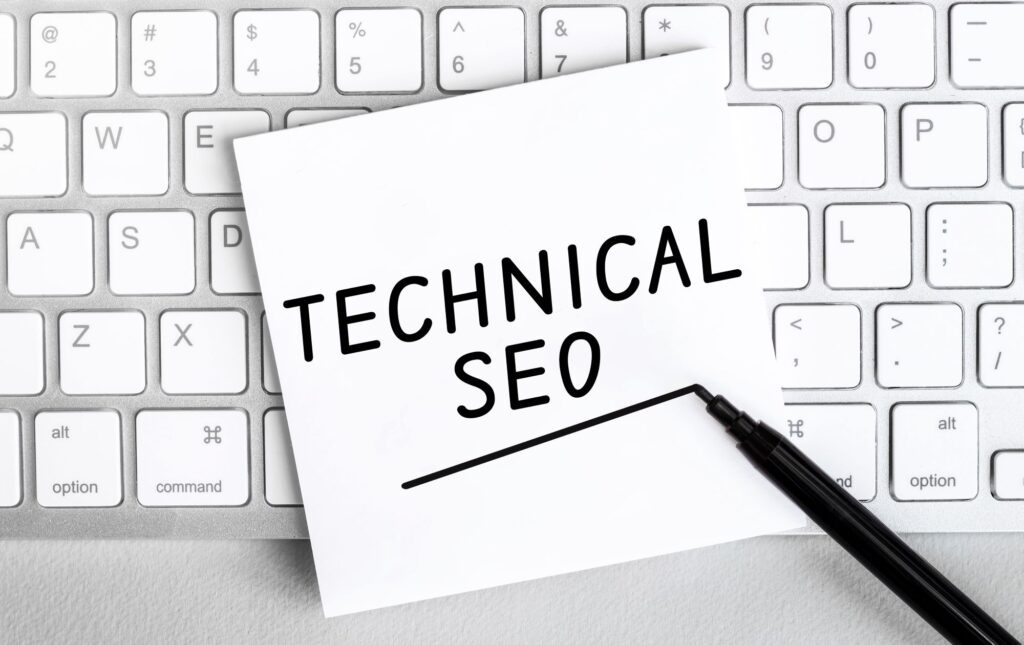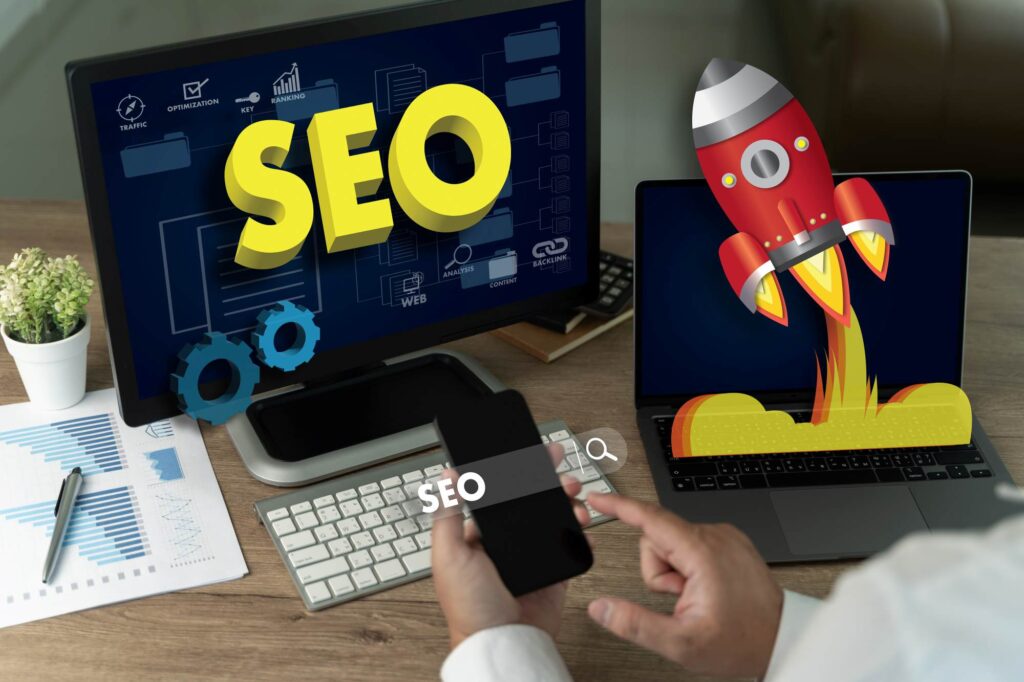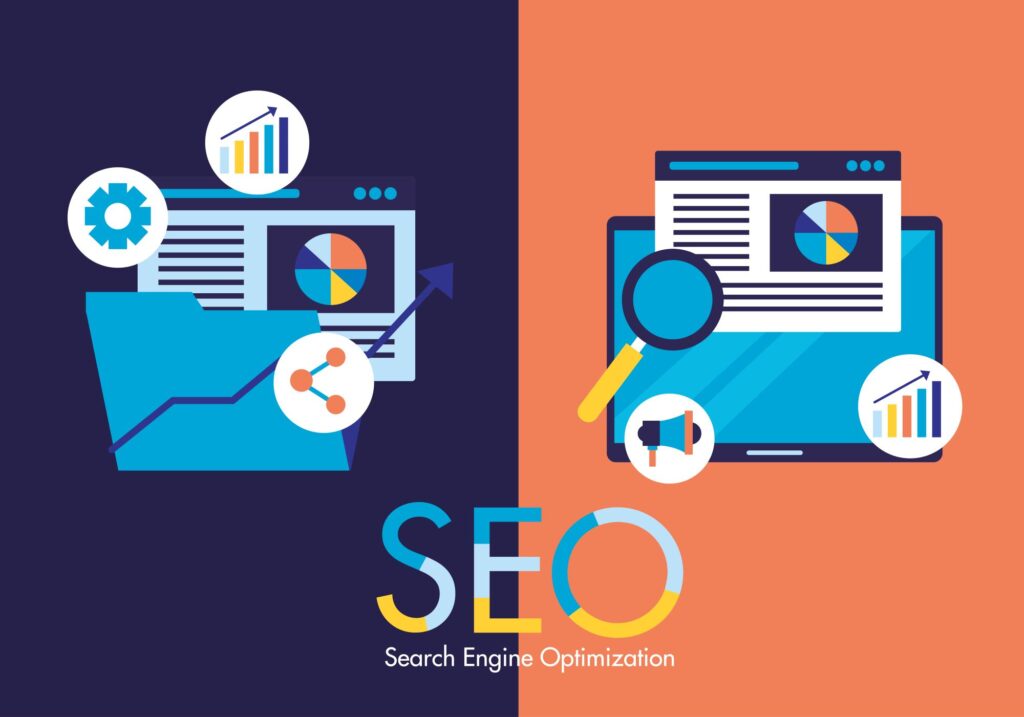
Struggling to get a higher rank on different search engines for your website? The reason is that technical SEO and content SEO are not used properly. To use these two SEOs you must know their key components and differences.
Even an important fact is you need both of them to get your expected outcome. So, Technical SEO ensures your website functions well for search engines. Content SEO focuses on creating valuable content that people want to read.
So, you must know the difference between Technical SEO and Content SEO. Remember, it is a must for improving your website.
Do you want to learn more? Here, you will get your expected answer. So, in this blog, I will share these two types of SEO.
You will also learn the top 10 differences between them. Here, I will also explain the common mistakes and how to avoid them. So, let’s begin the discussion with the definition of Technical SEO.
What is Technical SEO?

Technical SEO means making sure your website is set up so that search engines can easily read and understand it. It focuses on the technical aspects of your site, like its structure and speed.
Getting these details right helps search engines rank your site higher. Technical SEO serves as a catalyst for augmenting visitor influx and refining user experience.
Key Components of Technical SEO
You should learn about the components of technical SEO. Have a look at them:
● Website Architecture
An exemplary website architecture demands a sophisticated configuration that facilitates seamless interaction for users while concurrently optimizing for advanced search engine indexing protocols.
This includes having a clear menu, organized categories, and helpful internal links. A well-organized site helps visitors find what they need and makes it easier for search engines to understand your site’s layout.
● Site Speed and Performance
To make your site faster, you can optimize images, simplify your code, and use caching. Fast-loading pages make for a better user experience and can help your site rank higher.
● Mobile Optimization
Mobile optimization mandates that your site surpasses superficial visual appeal, ensuring it operates with impeccable precision and seamless fluidity across a multiplicity of screen dimensions.
The integration of a responsive design is an unequivocal necessity, safeguarding that your site maintains its inherent navigability and comprehensive accessibility, irrespective of the device or medium through which it is engaged.
● Crawling and Indexing
Crawling constitutes the methodical reconnaissance executed by search engines. This process is undertaken to discern and analyze the thematic and substantive nature of your website. In contrast, indexing involves the subsequent encapsulation of the extracted data.
This encapsulated information is then preserved within the search engine’s repositories. Each step ensures that your content is both recognized and retrievable.
The structural configuration of your site is meticulously designed to optimize the traversal pathways of search engine bots. This design ensures that the bots can precisely identify and interpret your content. As a result, they can systematically catalog the full breadth of your pages.
● Security (HTTPS)
HTTPS affords enhanced security over HTTP through the implementation of complex encryption algorithms. These algorithms substantially obfuscate data and impede unauthorized interception. Search engines favor secure sites and might rank them higher.
● Structured Data and Schema Markup
Structured data significantly augments search engines’ capacity to discern and interpret content. With schema markup, you can add extra details like reviews or product information. This can make your search results stand out with additional info, which might encourage more people to click on them.
What is Content SEO?

Content SEO entails the refinement and enhancement of your website’s textual material to elevate its prominence. It further facilitates superior positioning within search engine results pages, including those curated by Google. It means you must create, organize, and promote content that is helpful.
Here the main aim is to attract visitors, engage them, and inspire action. So, with proper SEO techniques, you have to optimize your content so that you can capture your target audience’s attention.
Key Components of Content SEO
For the best result, you must know the key components of content SEO. Let’s learn about them together.
● Keyword Research and Optimization
Keyword research entails the meticulous identification of terms and expressions. These are employed by users when seeking content analogous to that which you offer. When you know these keywords, you can naturally work them into your content.
Put the keywords accordingly in your content. This enables search engines to intricately discern the subtleties of your content, thereby augmenting its propensity to be prioritized in search results.
However, when individuals employ a keyword that has been scrupulously optimized within your content, it markedly elevates the probability of your content attaining a superior ranking.
● Content Quality and Relevance
Great content is important to effective Content SEO. It should be helpful, engaging, and well-researched, answering your audience’s questions. Don’t create random or useless content. It doesn’t grab your target audience’s attention.
When your content exhibits considerable merit, it engenders a greater propensity for users to prolong their engagement, propagate the material, and revisit the site. This, in turn, cultivates trust with your audience and conveys a signal of authority to search engines.
● On-Page SEO
On-page SEO involves the optimization and meticulous enhancement of each discrete page within the architectural framework of your website.
This includes using your keywords in titles, descriptions, and headings, and organizing your content clearly. It enhances search engines’ capacity to decipher and interpret your content, while also elevating its readability and navigational ease for users.
● User Experience (UX)
A website that exemplifies optimal design and operational efficacy is predisposed to retain visitors for prolonged durations.
An exceptional user experience is not only instrumental in enhancing visitor engagement but is also likely to precipitate a marked improvement in your search engine rankings.
● Content Freshness and Updates
Sustaining the vitality and contemporaneity of your content is of paramount importance. Consistent updates convey to search engines that your site remains both dynamic and relevant, while concurrently offering your audience compelling incentives to revisit. Updating your content helps keep your rankings strong and ensures it stays useful to your visitors.
Technical SEO vs Content SEO: Key Differences
Now, you might be wondering about the differences between Technical SEO and Content SEO. So, Here, I will share the top 10 differences between them. Let’s explore about them here:
1. Focus Areas
The first major difference between Technical and Content SEO is their focus area. Technical SEO encompasses the rigorous rectification of systemic anomalies, such as prolonged latency in page loading and the presence of dysfunctional hyperlinks.
It demands a comprehensive assurance of optimal operational integrity and seamless functional efficacy throughout the entirety of your website.
Content SEO focuses on creating useful and interesting content using keywords. This SEO also focuses on what your visitors will want to read.
2. Main Goals
Even, their main goals are different. Technical SEO wants to make your website work well for search engines. It augments the efficacy of search engine crawling by refining their ability to decipher the nuanced complexities of your site.
Consequently, this improves the precision and comprehensiveness of the indexing process for your website’s content.
Content SEO wants to attract and keep visitors by providing valuable information. Through blogs and articles, your target audience will get the needed information.
3. Impact on User Experience
Technical SEO improves how your site performs. It makes sure your site loads quickly and is easy to use.
Content SEO enhances user experience by offering engaging and relevant content. Exemplary content perpetuates visitor engagement and cultivates an increased retention of time spent on your site.
4. Handling Keywords
Technical SEO doesn’t deal directly with keywords. It focuses on the technical setup that helps search engines find your content.
Content SEO involves using the right keywords in your content. This means researching what your audience is searching for and including those keywords in your posts.
5. Speed Considerations
Technical SEO works on speeding up your site. It involves optimizing images and fixing technical problems to make your site load faster.
Content SEO doesn’t directly handle speed but ensures that your content is engaging. If visitors find your content interesting, they are likely to stay longer.
6. Mobile-Friendliness
Technical SEO ensures your site works well on mobile devices. Your site must be visually refined and operatively efficient on mobile platforms.
Content SEO makes sure your content is easy to read on mobile devices. It involves formatting text and images so they look good on smaller screens.
7. Responsiveness
Technical SEO makes your site responsive. This denotes its capacity for dynamic adaptation across disparate screen sizes. This includes a range of devices, from desktops and tablets to mobile phones.
This denotes its capacity for dynamic adaptation across disparate screen sizes. This includes a range of devices, from desktops and tablets to mobile phones.ChatG
Content SEO ensures your content fits well on all devices. This includes making sure text and images are formatted for readability on any screen size.
8. Driving Traffic
Technical SEO helps increase traffic by making your site easier to access. Fixing technical issues helps search engines find and rank your site better.
Content SEO drives traffic by creating high-quality content. Good content with the right keywords can attract more visitors from search engines.
9. Tools Used
Technical SEO uses tools like Google Search Console and speed testing tools. These help find and fix technical problems and check site performance.
Content SEO employs advanced analytical tools for the intricate tasks of keyword research and content refinement. These instruments facilitate the precise identification of optimal keywords and the rigorous assessment of content performance metrics.
10. Overall Role in SEO
Technical SEO forms the quintessential substratum of search engine optimization. It rigorously guarantees that the underlying technical architecture of your website is meticulously refined. Thereby facilitating the nuanced crawling and exacting indexing processes employed by search engines.
Content SEO builds on this by focusing on creating and optimizing content. High-quality content helps improve your site’s rankings and attracts more visitors.
They operate synergistically to underpin the success of your website. Achieving equilibrium between these elements will facilitate superior search engine rankings and a concomitant augmentation of traffic.
Common Mistakes and How to Avoid Them

There are some common mistakes of Technical and Content SEO.
1. Poor Keyword Research
A lapse occurs when rigorous keyword analysis is neglected. Without a nuanced understanding of the specific search terminologies utilized by your target audience, there is a significant risk. This risk entails that your content may remain obscured and imperceptible. To reach more people, you need to focus on the right keywords.
Generic keywords might have a lot of searches, but they won’t help your content rank quickly. Instead, focus on specific queries that will get you better rankings and a higher conversion rate.
2. Failing to Optimize Page Titles
Optimizing your content’s title is key to SEO. Since each page on your site ostensibly features disparate content, it is essential to assign a distinctive and contextually relevant title to each page. If the title lacks both allure and clarity, the probability of your content appearing in search results is significantly attenuated.
3. Overusing Keywords (Keyword Stuffing)
Using too many keywords in your content can actually hurt your SEO. It is important to use keywords in the right amount and in the right places. Keyword stuffing can lead to low-quality content and penalties from search engines.
Keyword stuffing can render your website inscrutable, engendering a suboptimal user experience, reduced conversion efficacy, and a diminution in repeat visitation.
4. Ignoring Meta Tags
Meta tags hold a critical import in the realm of SEO, possessing the potential to substantially augment your click-through rate from search engine results. The judicious incorporation of relevant keywords within these meta tags can markedly elevate the visibility and prominence of your page within the search engine hierarchy.
5. Lack of Image Optimization
Search engines lack visual perception. Therefore, it is imperative to meticulously apply titles, alt-texts, and descriptions. This ensures that image semantics are accurately encoded, facilitating precise algorithmic indexing and retrieval.
Wrapping Up
In the end, it can be said that Technical SEO and Content SEO have many differences. They are important parts of SEO. You need both of them to succeed in this field.
In this blog, I have shared 10 top differences between technical SEO and Content SEO. So, you can say that here you have learned almost every major difference between them. Here, I have already shared the key components of these two SEOs. The reason is first, you must know about their components to get a clear idea about them.
Keyword research, handling them, driving traffic, main goals, impact on user experience, etc are the main differences. If you have gone through this blog, by now you have understood that you need both of them for a better online presence.
So, knowing the differences is important to handle them well. But, remember, you need both of them for better performance. Here, by knowing the differences I believe that you will get the best outcome you have expected.
Now, implement all the tactics of content and technical SEO, try your best, and secure the best online position for your website.